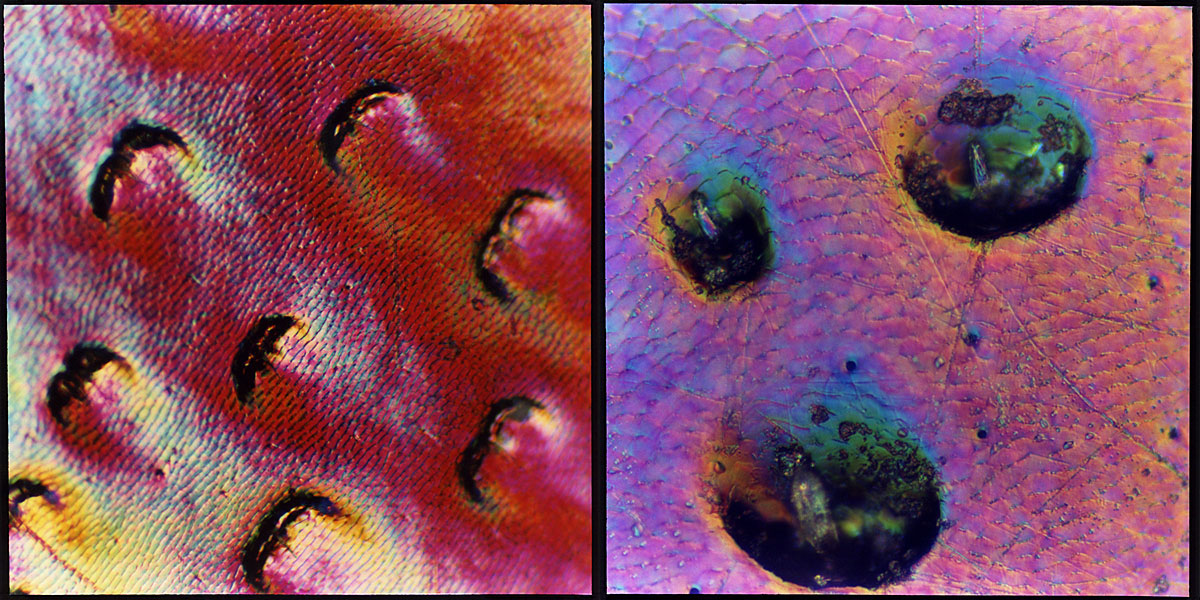 This is the surface of a type of insect called a metallic beetle from the family buprestidae. These are spectacular insects that have shiny, vibrant exoskeletons. The interesting thing about these beetles is that under a microscope, as this is here, they show no color at all—the color we perceive comes from an interference pattern much in the same way oil on water appears colorful. The color in these images is a product of a microscopy technique called Differential Interference Contrast or DIC. The operator can create any combinations of colors by simply adjusting settings. You can see how the beetle actually appears… Continue reading
This is the surface of a type of insect called a metallic beetle from the family buprestidae. These are spectacular insects that have shiny, vibrant exoskeletons. The interesting thing about these beetles is that under a microscope, as this is here, they show no color at all—the color we perceive comes from an interference pattern much in the same way oil on water appears colorful. The color in these images is a product of a microscopy technique called Differential Interference Contrast or DIC. The operator can create any combinations of colors by simply adjusting settings. You can see how the beetle actually appears… Continue reading
Category Archives: Other Stories
Billy Bragg, 1989
Shipping and Carbon
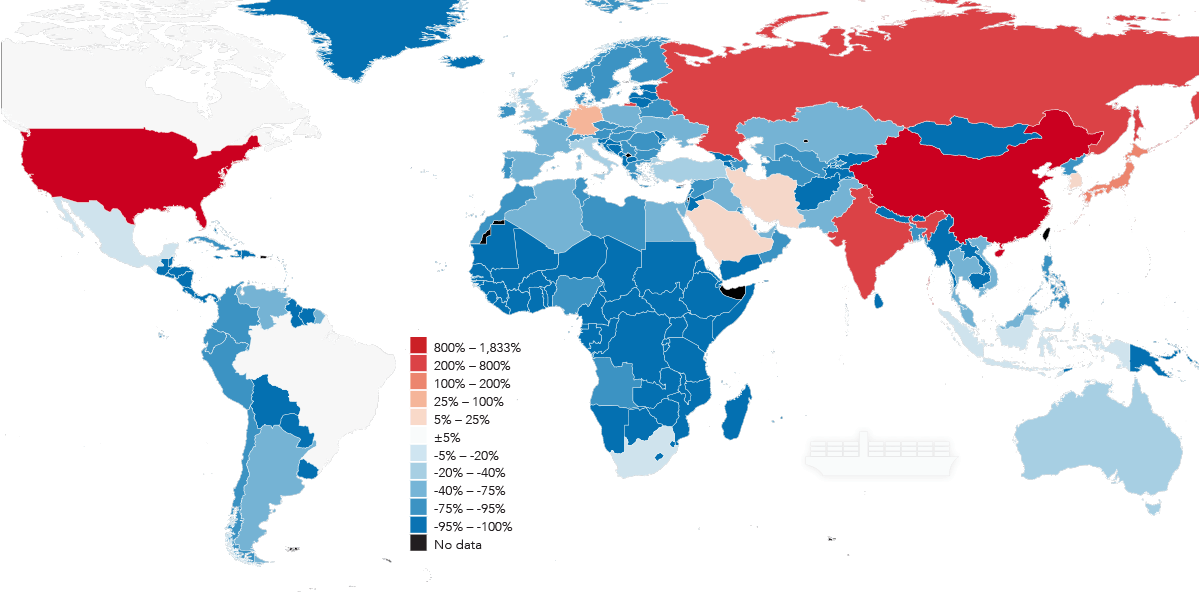 This week, the International Maritime Organization (IMO) is meeting to discuss carbon emissions from shipping. Over 80% of our goods are transported by ship. This map shows 2014 national CO2 emissions in relation to the 2014 shipping CO2 emissions of 532 million tonnes from container, bulk carrier, vehicle and general cargo ships, and chemical and liquid tankers, representing 34,112 vessels with a combined deadweight of 1.2 billion tonnes. Red indicates nations with carbon emissions 5% or greater than shipping, blue -5% or less. Brazil and Canada have emissions within ±5% of total shipping emissions. Shipping as a carbon source would rank 12th out of the 206 nations shown. Oil and LNG tankers as well as passenger and fishing vessels are not included in this analysis. The shipping activity represented here is 1.6% of all global emissions. Shipping is expected to become 20% in 2050. Data sources: World Bank, Oak Ridge National Laboratory, International Council on Clean Transportation. Click on the image for a larger view.
This week, the International Maritime Organization (IMO) is meeting to discuss carbon emissions from shipping. Over 80% of our goods are transported by ship. This map shows 2014 national CO2 emissions in relation to the 2014 shipping CO2 emissions of 532 million tonnes from container, bulk carrier, vehicle and general cargo ships, and chemical and liquid tankers, representing 34,112 vessels with a combined deadweight of 1.2 billion tonnes. Red indicates nations with carbon emissions 5% or greater than shipping, blue -5% or less. Brazil and Canada have emissions within ±5% of total shipping emissions. Shipping as a carbon source would rank 12th out of the 206 nations shown. Oil and LNG tankers as well as passenger and fishing vessels are not included in this analysis. The shipping activity represented here is 1.6% of all global emissions. Shipping is expected to become 20% in 2050. Data sources: World Bank, Oak Ridge National Laboratory, International Council on Clean Transportation. Click on the image for a larger view.
April 13th update: the IMO did agree to a 50% reduction in emissions from 2008 levels by 2050. While this cannot be a final target, it is a good step. This is the first time the IMO has set carbon targets.
Eclipse 2017
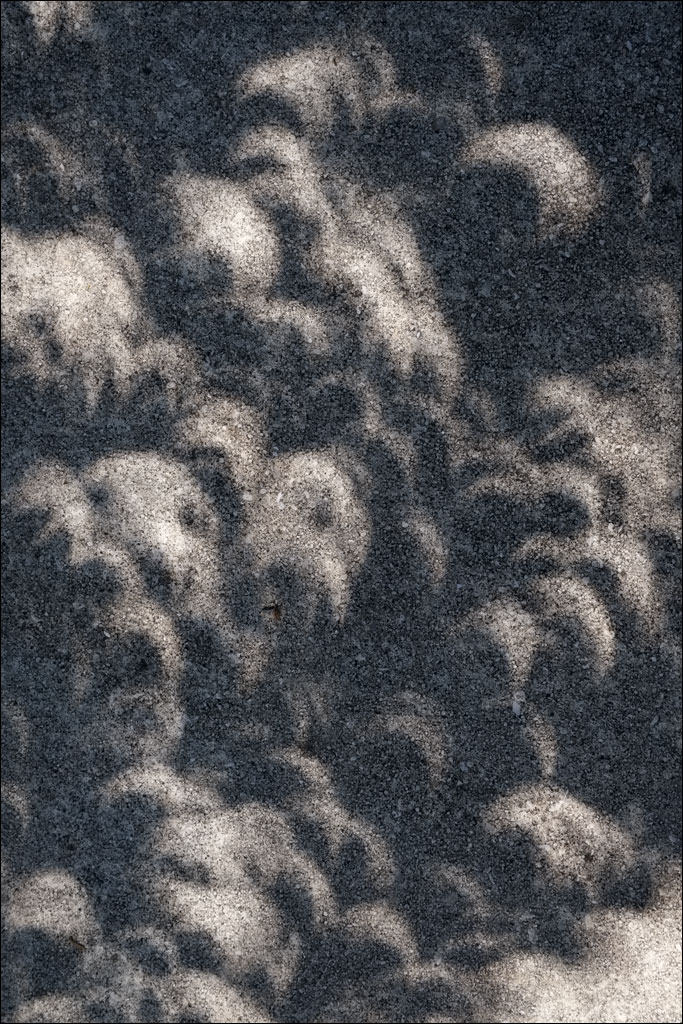 Florida experienced a partial eclipse of the sun on August 21, 2017. It is possible to view an eclipse by looking up with special glasses to protect your eyes. You can also look down to see the image of the sun projected through the leaves of a tree. The overlapping leaves and branches create tiny gaps that project an image of the sun on a sidewalk, much in the same way a pinhole camera creates an image. Normally, these images are round—the unobscured disk of the sun. But during an eclipse, a crescent caused by the moon covering the sun is projected. Continue reading
Florida experienced a partial eclipse of the sun on August 21, 2017. It is possible to view an eclipse by looking up with special glasses to protect your eyes. You can also look down to see the image of the sun projected through the leaves of a tree. The overlapping leaves and branches create tiny gaps that project an image of the sun on a sidewalk, much in the same way a pinhole camera creates an image. Normally, these images are round—the unobscured disk of the sun. But during an eclipse, a crescent caused by the moon covering the sun is projected. Continue reading
Idyllic Summer
 Cobbosseecontee stream meanders through our neighborhood. If there is a quintessential image of summer in Maine, this might be it. This is not a wilderness. Homes can be found throughout this landscape. Interstate 95, the main highway through Maine, also crosses this stream not far from here. Augusta, the State capital, is about ten minutes away. The only people coming to this spot would be local kids taking a later afternoon swim, anglers putting in boats to go fishing, or a neighborhood couple returning from walking their dog to take in the view. Click on the image for a larger view.
Cobbosseecontee stream meanders through our neighborhood. If there is a quintessential image of summer in Maine, this might be it. This is not a wilderness. Homes can be found throughout this landscape. Interstate 95, the main highway through Maine, also crosses this stream not far from here. Augusta, the State capital, is about ten minutes away. The only people coming to this spot would be local kids taking a later afternoon swim, anglers putting in boats to go fishing, or a neighborhood couple returning from walking their dog to take in the view. Click on the image for a larger view.
Sun Worshipers
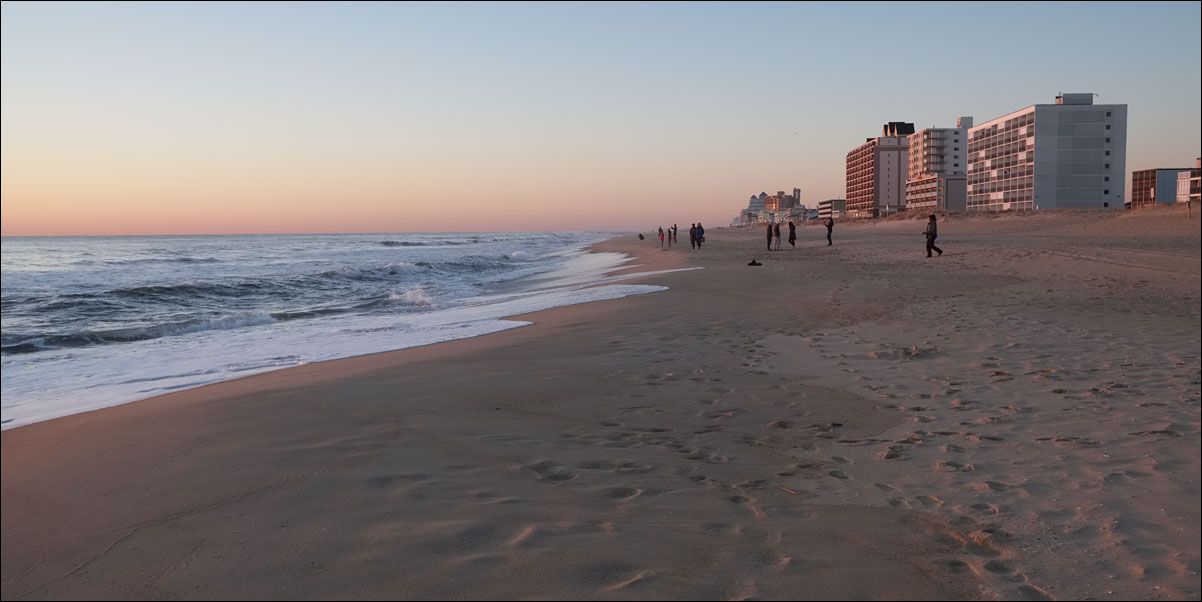 The few off-season residents in Ocean City, Maryland walking to the beach to greet the rising sun. What a strange power this dawn greeting has over humans, regardless of culture. The ritual seems to be partly driven by beauty, and partly by the optimism of a new day. We all know this event. We have experienced the sun rise above the horizon a multitude of times. Yet, each event seems new. Watching our star clearing the edge of our planet shows a world much bigger than ourselves. And, for a moment, we feel at peace. Click on the image for a larger view.
The few off-season residents in Ocean City, Maryland walking to the beach to greet the rising sun. What a strange power this dawn greeting has over humans, regardless of culture. The ritual seems to be partly driven by beauty, and partly by the optimism of a new day. We all know this event. We have experienced the sun rise above the horizon a multitude of times. Yet, each event seems new. Watching our star clearing the edge of our planet shows a world much bigger than ourselves. And, for a moment, we feel at peace. Click on the image for a larger view.
A Different Light
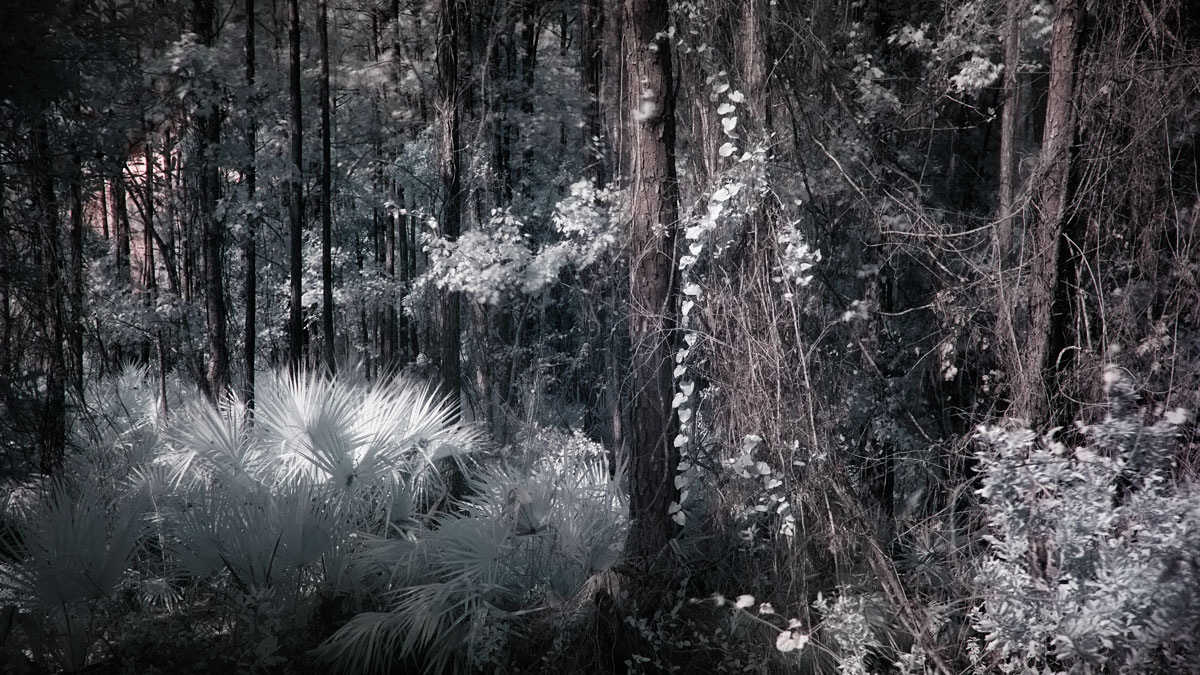 The light and color we see in the world is an extension of our biology. If we shift our perception to the longer wavelengths of near infrared, we would see the world very differently. Chlorophyll, the chemical that gives plants their green color, is highly reflective in the near infrared. Plants practically glow, at least when healthy. We see this very differently. Continue reading
The light and color we see in the world is an extension of our biology. If we shift our perception to the longer wavelengths of near infrared, we would see the world very differently. Chlorophyll, the chemical that gives plants their green color, is highly reflective in the near infrared. Plants practically glow, at least when healthy. We see this very differently. Continue reading
Columbus Day
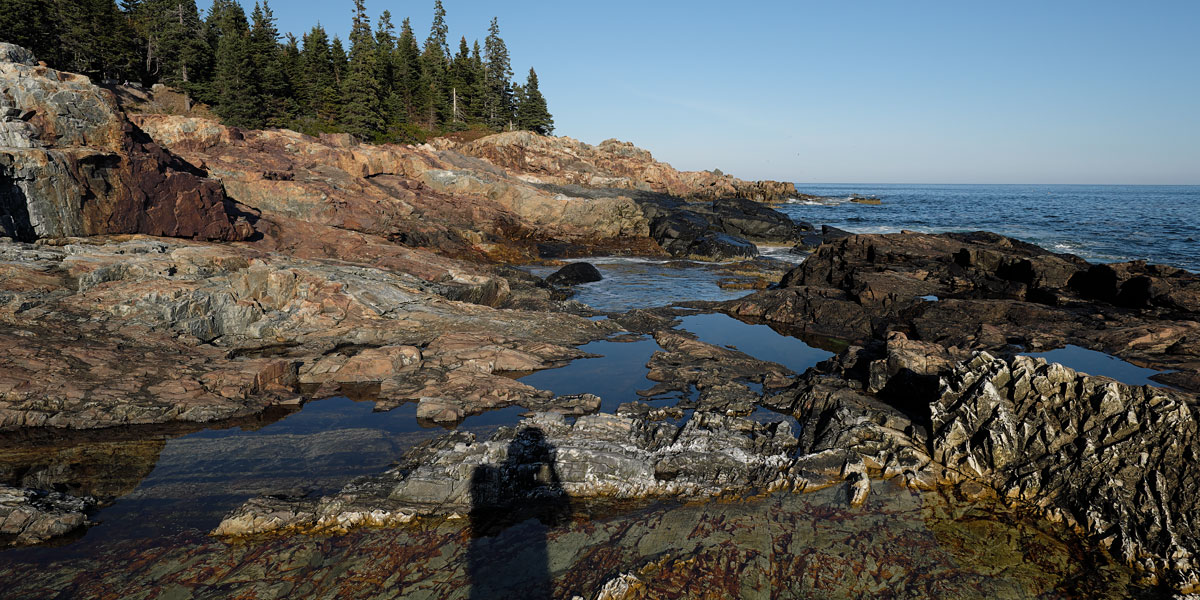 Columbus Day marks a major turning point in history when the culture of the “Old World” met the “New” one. The common narrative is the civilizing force of European culture built a nation from an untamed wilderness. But this invasion was brutal, as most colonization is—Europeans are not the only colonizers in history. Click on the image for a larger view.
Columbus Day marks a major turning point in history when the culture of the “Old World” met the “New” one. The common narrative is the civilizing force of European culture built a nation from an untamed wilderness. But this invasion was brutal, as most colonization is—Europeans are not the only colonizers in history. Click on the image for a larger view.
A Changing World
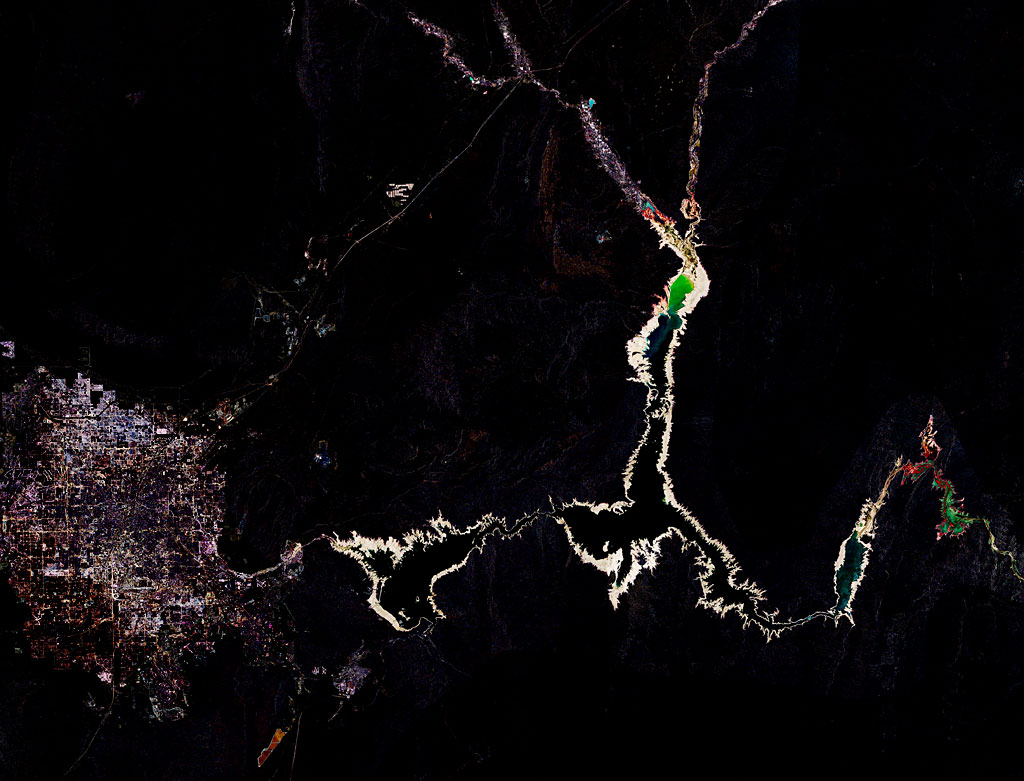 This is not some strange specimen under a microscope, but a composite image of two satellite photographs from the NASA Earth Observatory web site showing the high and low water level in Lake Mead in 1984 (high) and 2016 (low). What you are seeing is the difference between those two images—black means there was no change. The bright fringe around the lake is how far the water has receded. It also shows the development of Las Vegas to the west of the lake. The dark center of the city is where it was already developed in 1984. Most of this water loss and development has happened since 2000. Here are the original images: Continue reading
This is not some strange specimen under a microscope, but a composite image of two satellite photographs from the NASA Earth Observatory web site showing the high and low water level in Lake Mead in 1984 (high) and 2016 (low). What you are seeing is the difference between those two images—black means there was no change. The bright fringe around the lake is how far the water has receded. It also shows the development of Las Vegas to the west of the lake. The dark center of the city is where it was already developed in 1984. Most of this water loss and development has happened since 2000. Here are the original images: Continue reading
Serpentine
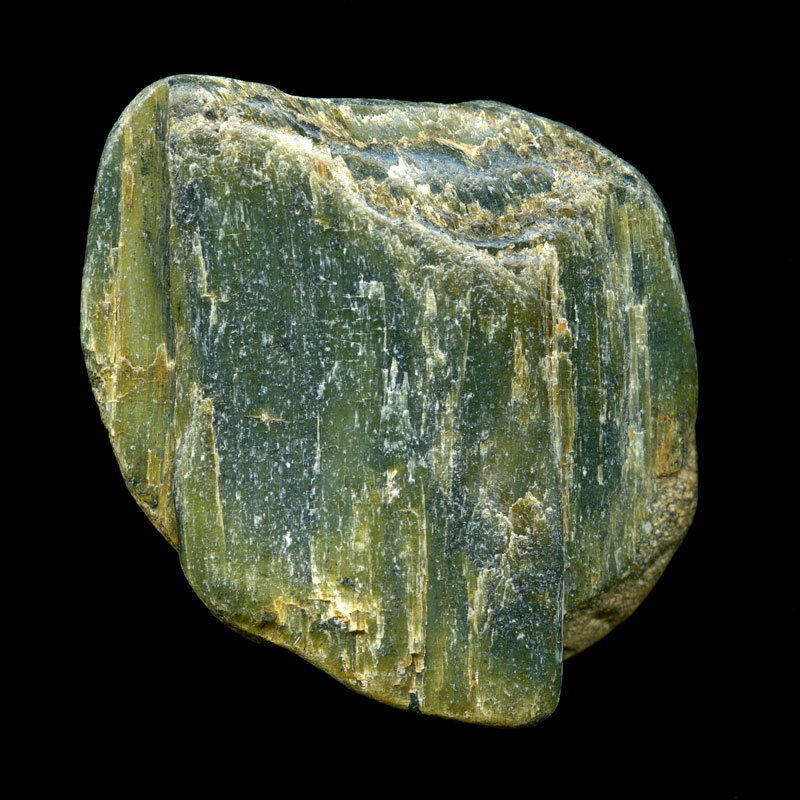 This mineral gets its name from its resemblance to the green skin of a snake. Water, pressure, magnesium, silica, and iron are its recipe and ingredients. Despite its softness, this rock was wrought when a slab of the Earth’s mantle was forced to the planet’s surface with the closing of an ocean between two continental plates. The conditions and material that create serpentine are toxic to plant life. Click on the image for a larger view.
This mineral gets its name from its resemblance to the green skin of a snake. Water, pressure, magnesium, silica, and iron are its recipe and ingredients. Despite its softness, this rock was wrought when a slab of the Earth’s mantle was forced to the planet’s surface with the closing of an ocean between two continental plates. The conditions and material that create serpentine are toxic to plant life. Click on the image for a larger view.

